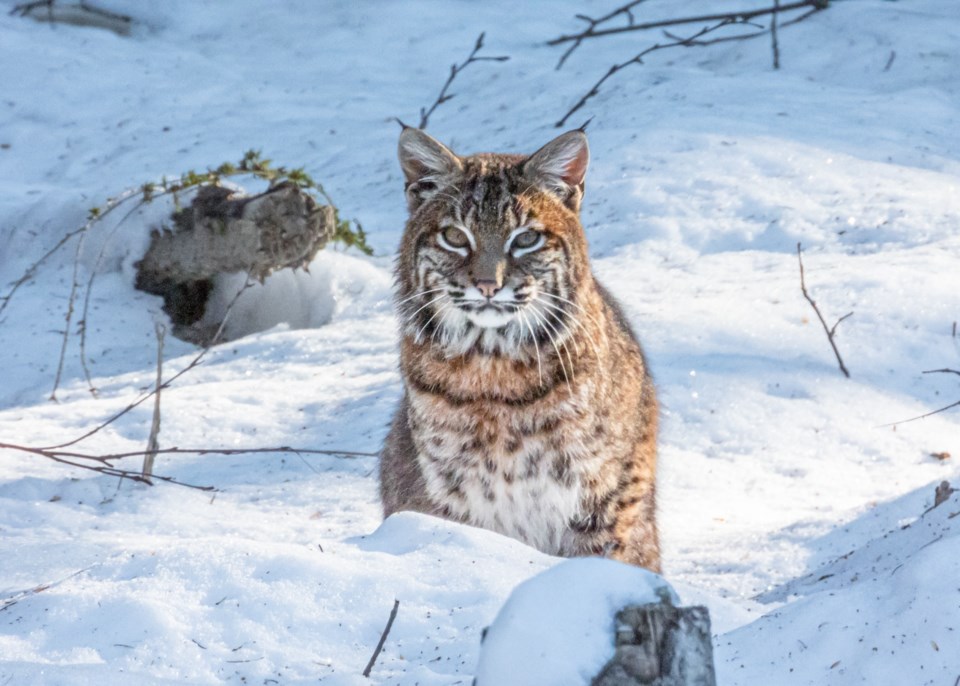While he is often out and about capturing images of wildlife, it isn't every day 麻豆社国产photographer Tim Cyr captures an image of a bobcat.
Cyr spotted the animal in the Upper 麻豆社国产Valley on the morning of Feb. 12.
According to the bobcat can be found in southern Canada across most of the continental U.S. to central Mexico, living everywhere from deserts to swamps to forests.
Male bobcats typically weigh 9 to 14 kg, while adult females are smaller at 6 to 10 kg.
They use dens as shelter, protection, or rest, among other things.
"Dens used for birthing include caves, openings among large boulders, dense piles of brush, hollow logs, cavities at the base of large trees and stumps, abandoned beaver lodges, and even old abandoned buildings," the document states.
The bobcat diet is quite diverse, depending on where they live and what is available.
"Staple items generally include hares, rabbits, squirrels, small mammals (such as mice and voles), birds (primarily grouse) and deer. Bobcats are also known to take rats, ground squirrels, marmots, porcupines, snakes, and other reptiles, and one was even observed catching bats at a watering hole."
Here are some other fun bobcat facts:
•Bobcats are essentially loners unless it is a mother and kittens;
•During the breeding season, they pair up for a few days at a time;
•Bobcats breed from mid-February through March and after a nine-week gestation period, the young are born in May or June;
•Litter sizes vary from one to six, but most are in the range of two to four;
•Bobcat kittens are blind and helpless at birth, weighing about 200 to 300 grams;
•Their eyes open at about 10 days, they begin to take solid food by about four to five weeks, and they are usually weaned by about 8 to 10 weeks;
•All parental care is provided by the mother;
•Although the young increase their degree of independence steadily throughout the first fall and winter, they generally stay with the mother until the following spring;
•Coyotes may limit the number and distribution of bobcats;
*Bobcats are most active when their prey is—generally in the early morning and late evening, although during winter, there is greater activity during daylight hours;
•Bobcats generally hunt by stalking and flushing or “still” hunting from a hunting bed; they have been known to sit motionless for hours where prey may appear;
•The bobcat is a sprinter, not a distance runner, so rushes are often less than 15 metres;
Find more information about bobcats on this.




